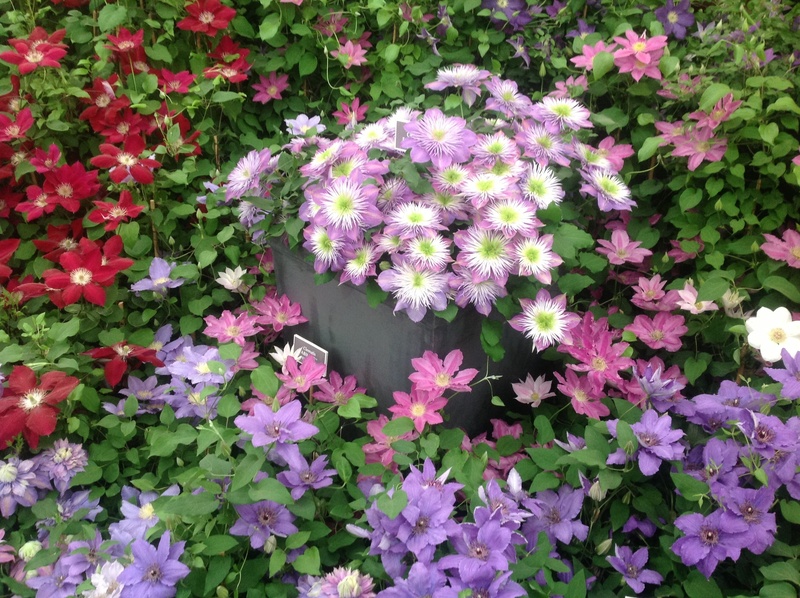Building a Child-Centric Garden Area
Posted on 13/04/2025
Creating a garden area that caters to children is a fantastic way to encourage outdoor play, foster a love of nature, and provide a safe and engaging environment for your kids. A child-centric garden can serve as a wonderful space for learning, exploration, and fun. In this article, we will explore tips, ideas, and considerations for building a garden area that is both child-friendly and functional.
Why Create a Child-Centric Garden?
Gardening is a great activity for children, offering numerous benefits including physical exercise, education, and mental health improvements. A dedicated garden area for your kids can:
- Encourage outdoor play and physical activity.
- Teach responsibility and patience through plant care.
- Foster a connection with nature.
- Provide sensory experiences through different textures, colors, and scents.

Planning Your Child-Centric Garden
Before diving into planting and decorating, take some time to plan out your garden space. Consider the following elements:
Safety First
- Ensure that the garden is free of any hazardous plants or materials.
- Install barriers or fences to keep children within the designated garden area and away from potentially dangerous zones.
- Use non-toxic and child-safe gardening supplies and materials.
Age-Appropriate Features
- Consider the age of your children when selecting plants and garden features.
- For younger children, include sensory plants like lamb's ear or herbs such as mint and lavender.
- Older children may enjoy learning about and growing edible plants like vegetables and fruits.
Interactive Elements
- Create spaces that invite interaction, such as a sandbox, water features, or digging areas.
- Include garden accessories like stepping stones, fairy gardens, or bird feeders to spark imagination.
Building the Garden
Once you have a clear plan, it's time to start building your garden. Here are some key components to include:
Pathways
- Lay down pathways using materials like wood chips, gravel, or stepping stones.
- Ensure pathways are wide enough for safe navigation and free of trip hazards.
Seating Areas
- Install child-sized benches or picnic tables where children can relax or work on garden-related projects.
- Create shaded areas using umbrellas, pergolas, or natural tree canopies.
Plant Selection
- Choose hardy, low-maintenance plants that can withstand enthusiastic play.
- Opt for a mix of flowers, shrubs, and trees to create a diverse and stimulating environment.
- Incorporate edible plants to teach children about where food comes from.
Tools and Supplies
- Provide child-sized gardening tools to make tasks manageable and safe.
- Use raised beds or container gardens for easy access.
Maintenance and Involvement
Keeping your child-centric garden thriving requires regular maintenance and participation from both you and your kids. Here are some tips:
Involve Children in Tasks
- Assign age-appropriate gardening tasks to your children, such as watering, weeding, and harvesting.
- Turn garden maintenance into a family activity by scheduling regular gardening days.
Educational Opportunities
- Use the garden as a teaching tool to explain concepts like plant life cycles, composting, and ecosystems.
- Encourage children to observe and document changes in the garden over time.
Pros and Cons
Pros:
- Promotes physical activity and outdoor play.
- Provides a hands-on learning environment.
- Encourages responsibility and nurtures patience.
- Enhances sensory development.
Cons:
- Requires regular maintenance and supervision.
- Initial setup can be time-consuming and costly.
- Weather-dependent activities may limit garden use.
Tips for Success
- Start Small: Begin with a limited area and expand as your children grow and your confidence increases.
- Encourage Creativity: Allow children to add their personal touch to the garden with decorations or plant choices.
- Be Consistent: Regularly involve your children in garden activities to keep their interest alive.
- Safety Checks: Periodically assess the garden for any potential hazards or necessary updates.

Takeaways
- A child-centric garden can offer numerous physical, educational, and emotional benefits.
- Proper planning is essential to create a safe and engaging space.
- Involvement from the whole family can make the garden a cherished area for everyone.
Conclusion
Building a child-centric garden area is a rewarding endeavor that provides a nurturing and stimulating environment for children. With careful planning, thoughtful plant selection, and ongoing maintenance, you can create a garden space that not only entertains but also educates and enriches the lives of your kids. By fostering a child's connection with nature, you're not only creating a beautiful garden but also planting the seeds for a lifelong appreciation of the outdoors.



